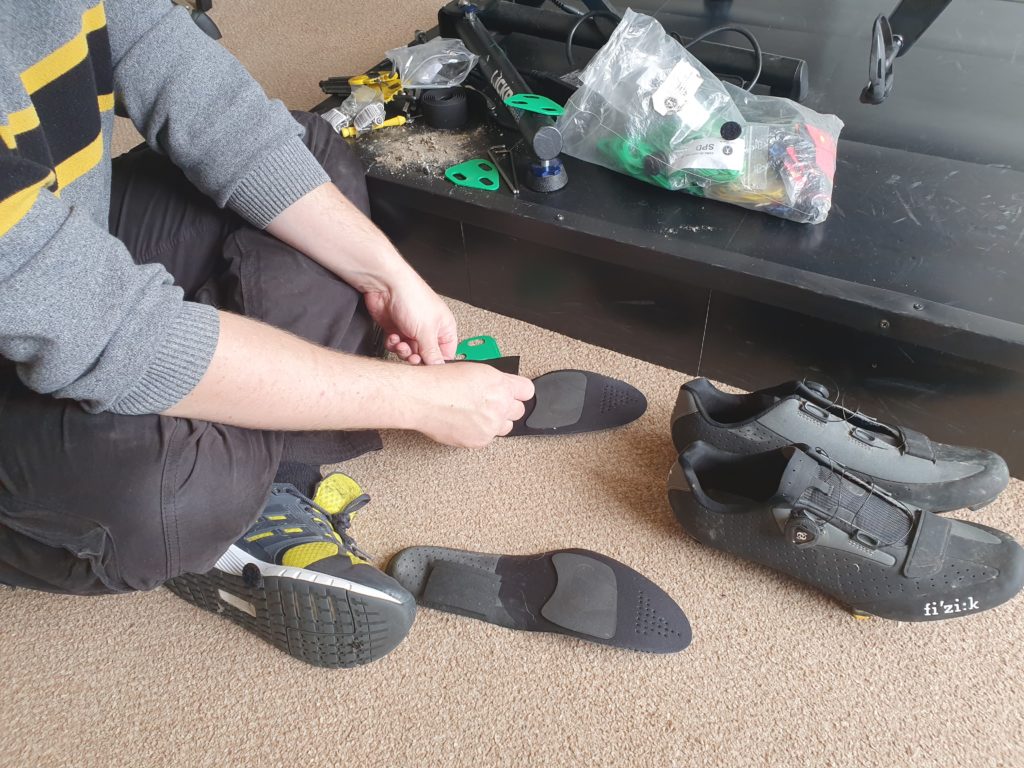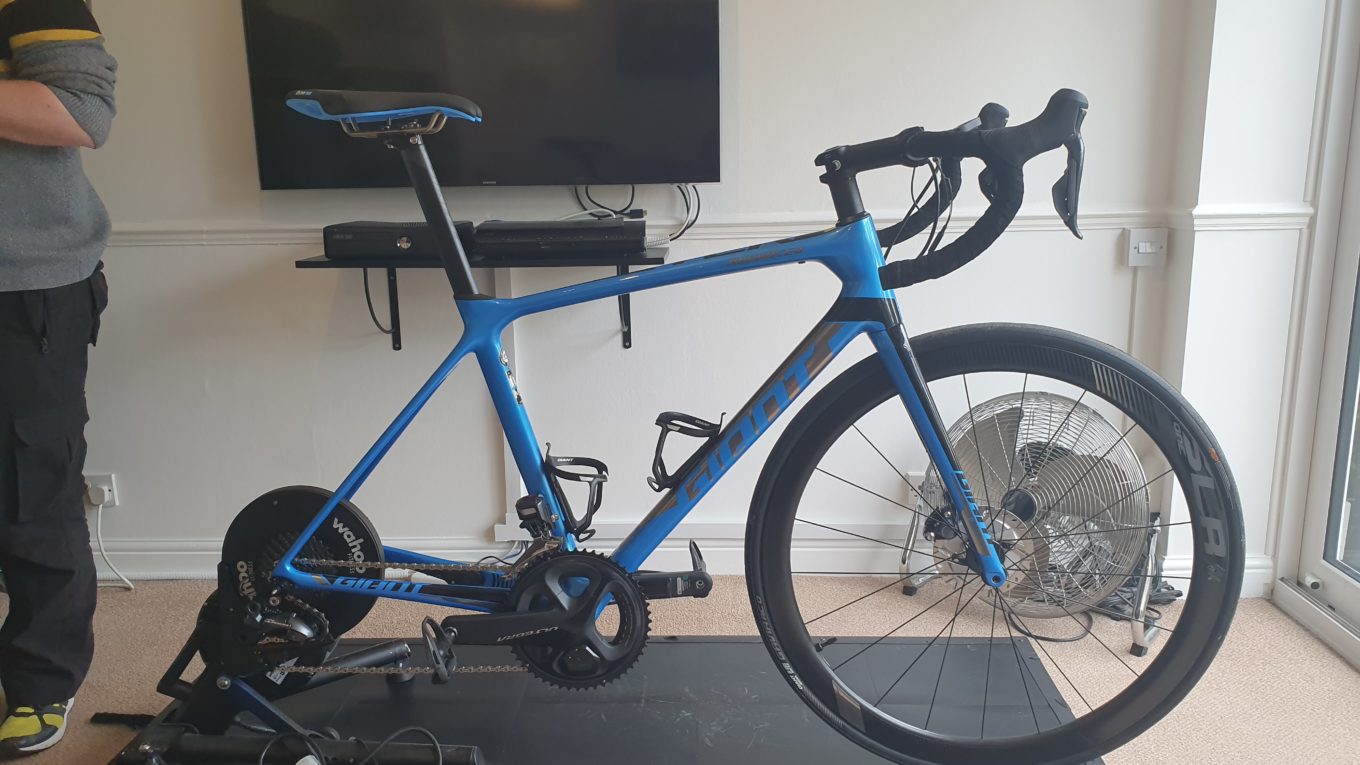Why have a bike fit?
There are a lot of expensive things in the Triathlon world. Most of the time, when you hand over a bundle of cash you get something exciting in return – it could be a shiny new set of pedals or a place in an iconic race. When you seem to get nothing back, it can be harder to justify to yourself (or anyone else who might care), and a bike fit is definitely in that category.
I think however there’s a strong argument to be made that a decent fit could be the best investment you make – and I think most people who have had a proper one agree. To try to bridge that gap I thought I’d describe a bike fit experience.
When I had my first fit with Adam White he spent a lot of time initially getting to know me, my history, my goals and my bikes. I’d completed a detailed pre fit questionnaire that filled him in on a couple of broken bones that although long mended I suspected impacted on my kinetics. Adam works from a dedicated workshop in his home – it’s clean and as optimally laid out as only something that’s been in daily use for years can be.
As soon as I arrived Adam carefully observed me as I moved through some simple exercises and postures. He was physically assessing my flexibility and core strength with more care and detail than I’d ever experienced. Assessment complete, he talked me through the good and the bad – there seemed to be more latter, but some of the former was surprising. and gave me a bunch of exercises I could work on to address some of the issues. I promised faithfully to make this a core part of my daily routine (I haven’t, but that’s on me….).
At this point, my experience for my second fit converges on the first – as a return visit it was quicker and cheaper than the first. Adam was familiar with my details and history so we didn’t need to worry about the initial assessment.
Next, for both fits, I actually got on the bike. Adam has two different rigs he can use depending on the needs of the rider. The first is a complex Retul rig that uses marker dots and technology to track the riders movement and feed it into a computer. I was amused half way through the fit to realise he unknowingly had a couple of marker dots stuck on him. Alternatively, he can just strap your bike to a top end turbo and use his experience to read your body as you move around on the bike. I was actually relieved when he chose the second option for my fit, I like the interaction and discussion as he makes changes to the bike.
We discussed how the bike had felt on its debut ride, and I could only unhelpfully laugh and say ‘It felt pretty damn good as it was, actually’. This wasn’t a massive surprise as I’d shamelessly taken advantage of his knowledge before buying the newest bike – I’d emailed him the geometry of the bike, thinking I needed a Medium/Large (average height, average size, right?) but Adam had quickly replied that I needed a medium – with a M/L I might not be able to get the stem low enough for the best riding position. With friends who’ve had expensive disasters sizing frames, having access to this guidance and knowing I’m choosing the right option is almost worth the cost of the fit for me.
This bike was a lot less aerodynamically sensitive than the first so we laughed about the way we’d changed every single thing about my riding position in the first fit. Everything, from feet to handlebars was tweaked and customised. I’ll be honest, I’d left worried that the position we’d wound up with was too aggressive and would leave me wrecked inside the first few kilometres but from the very first ride I’d not had too much of a problem maintaining the position and within a couple of rides was very comfortable with it.
Adam moved around the bike, quietly watching me as I pedalled. Every now and again he asked me to shift my position, for example he’d ask me to move to the drops on the handlebars, or up to the hoods. The one thing I’d been confident of before I arrived was that my saddle was a little to low. Adam muttered that he’d need to drop the saddle a little as my right knee was locking. I reminded myself that I knew nothing. After watching for several minutes he asked me to hop off and attacked my shoes.
As I watched Adam removed the insoles from my bike shoes. I winced – after years of regular drenching with sea and lake water I knew they smell. He didn’t mind, and swiftly packed out the insole to give more support in the critical part of the arch. Next, he removed the cleats (it took him a while to dig out quite a lot of accumulated muck and get to the bolts, and his immaculate workshop was no longer quite so tidy) and added some shims to level my feet out horizontally and allow my legs to maximise the power I was putting through while minimising the stress on my ankles.

Shoe height set correctly he proceeded to fine tune the positions of the cleats on the sole of the shoes so the ball of my feet was in the right place for my pedal stroke. At every step, I hopped back on the bike and pedalled a bit more as Adam watched and continued to tweak. Finally with the pedals in the best position, I could already feel a difference with every revolution of the crank – a small one but I could tell it would add up over a ride.
We moved on to the saddle, adjusting the height, angle and setback from the bars; as we did this Adam was watching my legs, arms, elbows, wrists, and spine making sure that everything remained free and able to flex while evenly distributing the stresses along my body. With every change we made, he carefully checked back starting with the pedals and working up to make sure that nothing was being pulled out of the optimum position.
Seating position sorted we spent a surprisingly long time on the handlebars. I’d mentioned that the new bikes aggressive race geometry meant my first (and only) ride had been a little less smooth steering that I was used to and we put some work in to make sure my center of gravity was in the right place and I wasn’t transmitting steering forces from locked shoulders, all things that weren’t right for me out of the box.
The first fit we’d wound up swapping out my stem – Adam had a stock of different options and had happily lent me one until I was able to replace it with the brand of my choice. This time the stem was fine, but we tried three different stem heights and then focused on the angle of the bars, the levers and the reach to the levers.
I was immediately twitchy as Adam dropped the stem – this needed to be a comfortable ride and I didn’t see how ‘slamming’ it would help; I was amazed at how much more comfortable a 1cm drop made the ride and he explained how it had allowed me to open up my body on the bike. We then dropped it another centimetre and I could immediately feel how that had pushed everything too far, so we quickly reverted to the previous setting.
Adjustments complete, Adam quickly recorded all of my settings electronically using a wand and camera system, and emailed me those settings in case I needed them in the future. He reminded me if I used some of the exercises and foam roll critical muscles I can probably continue to improve my riding position. I promised I would (we both know I probably wont!).
Even for this return visit, we’d changed pretty much every setting on the bike. It already felt better, and I now know I’ve done everything I can to be ready for what looks like a brutal Long Course Weekend. The great thing is I’m going to continue to reap the rewards of this fit over the next few thousand miles, not just the 112 in that one event. The bike already feels better – I’m going to hammer it around a local tri at the weekend and see what kind of a difference it makes.
For the price of a new pair of top end trainers access to this kind of expertise has to be a worthwhile long term investment, surely?

